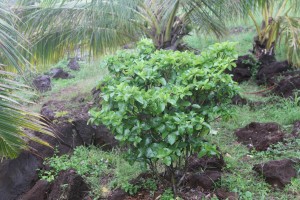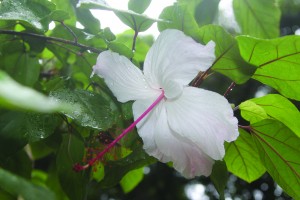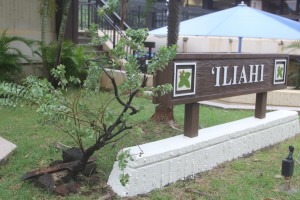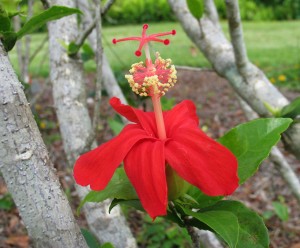This article is meant to accompany ‘Top 4: Invasive animals on campus‘.
From endemic plants that are found nowhere else on the planet, to the indigenous and naturalized varieties that have found a niche here in Hawai‘i, many threatened taxa are quickly finding their way onto the endangered red list of flora whose numbers are drastically low in the wild. Fortunately for us, some of these elusive varieties have found a home here on campus at KapCC.
However, our campus has also become a home to many of the invasive species that are in some part responsible for the decline of many native organisms to begin with.
4. Na‘u
Gardenia brighamii
Once common throughout the islands in low dry-land areas the Na‘u now finds itself on the critically endangered list with only 12 individuals left in the wild. Luckily for us, botanical gardens and Hawaiian plant enthusiasts have made it possible for a resurrection to take place. Two specimens can found on campus located in the Hawaiian garden outside the Manele building. If you ever has a chance to see this gardenia flower, you will not be disappointed, as the fragrance is unreal. This plant had many traditional uses, with some of the most notable being its use in creating a bright yellow dye from the mature fruit and the timber being fashioned into the anvil for making tapa. Additionally, a lei strung from the flowers is said to be an old time favorite.
3. Koki‘o kea
Hibiscus arnottianus
A stunning white petaled hibiscus species with pink overtones. This rare flower is unique in that it is the most fragrant non-hybridized hibiscus in the world, and to top it off, it’s endemic (found nowhere else but here). With continued habitat destruction, this increasingly scarce flower would be headed towards the red list if it weren’t for ardent gardeners and botanists with an eye for aesthetics that the koki‘o kea lends to any landscape. A few of these gems can be found around campus, but the most prominent are in front of the Koki‘o building sign.
2. ‘Iliahi
Santalum freycinetianum
The Hawaiian sandalwood, which many feel is on its way to endangered list due largely in part to over harvesting during the mid 1800’s, was once common throughout the islands. After the death of Kamehameha I, his son soon found himself indebted to western sandalwood traders, who had been doing business in Hawai‘i since the turn of the century. The old method of trading, which forbade the sale of sandalwood on credit, was not practiced by Kamehameha II, and many of the old laws in place to protect young trees and seedlings were lifted. Thus, the rate of harvest began to exceed the speed at which the species could propagate itself, quickly resulting in its demise. Several pockets of ‘iliahi can still be found way off the beaten path in remote corners of the islands, but one such seedling grows in front of the sign of the building that carries its name here at KapCC.
1. Koki‘o ‘ula‘ula
Hibiscus koki‘o
The first thing you’ll notice about this threatened species of hibiscus are its fire red petals and elongated stamen. Being on the smaller side, this flower, blooming only for a single day, often slips by unnoticed by those used to gawking at their much larger cousins, but as anyone who is privy to this species can tell you, its beauty and elegance never ceases to amaze. Found in hidden alcoves and botanically crowded corridors on campus, the Koki‘o ‘ula‘ula is one worth seeking out.




